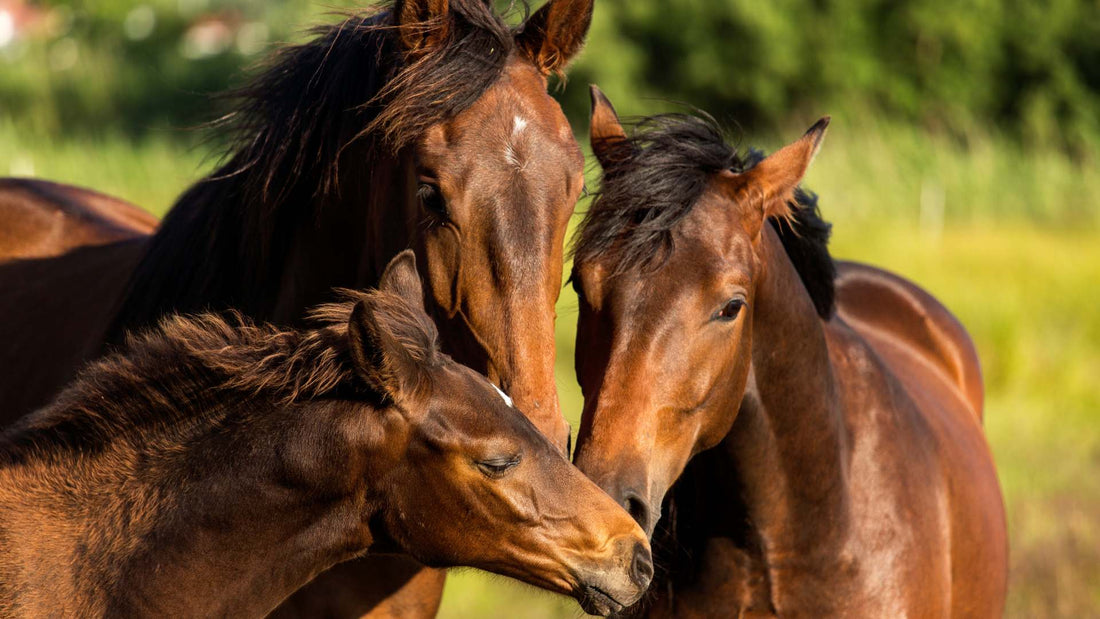
Why You Should Start Fly Control Before You See Flies
Share
As the cooler months settle in and visible flies seem to disappear, many horse owners ease off on insect protection. But waiting until you see flies or midges can leave your horse vulnerable to serious health risks.
Insect life cycles and environmental conditions in South Africa mean fly and midge activity often starts before you realise it. By the time biting insects are visible, they may already be spreading disease, causing irritation, and triggering allergic responses.
1. Insect Life Cycles Begin Early
Culicoides midges and stable flies lay eggs in damp, organic matter such as manure, mud, or standing water. These eggs hatch into larvae and then pupae — often long before you see adult insects flying.
A few warm days or a mild winter patch is enough to reactivate breeding cycles. If fly control only starts when adults appear, it's too late to interrupt the cycle effectively.
2. Disease Prevention Starts Before Exposure
Proactive fly control is crucial in helping to prevent:
African Horse Sickness (AHS): Spread by Culicoides midges, especially dangerous during late summer and into autumn.
Sweet Itch (Insect Bite Hypersensitivity): Triggered by allergic reactions to midge saliva.
Eye and skin infections: Caused or worsened by fly irritation and bacterial spread.
By starting repellent protocols early, you reduce the chance of exposure to biting insects entirely.
3. Environmental Conditions Vary
Even in winter, some areas of South Africa maintain microclimates warm enough to sustain insect activity — particularly in:
- Coastal and lowland areas
- Stables with standing water
- Manure-rich or sheltered environments
These hotspots make consistent control important even outside peak insect months.
4. Early Action = Easier Control
When you begin insect protection before fly season peaks:
- There are fewer adults to manage
- Larval growth is reduced
- Horses become accustomed to protection routines (e.g., sprays, masks)
This leads to more effective, lower-effort management throughout the year.
5. What You Can Do Now
To stay ahead of the cycle:
- Begin using repellents like Tabard Equine as a preventative, not reactive, solution
- Remove organic waste from stables daily
- Eliminate standing water near paddocks
- Use physical barriers like fly masks and sheets
Conclusion:
Waiting for insects to appear is waiting too long. Starting early with a consistent fly control strategy — including proven repellents like Tabard — keeps your horses healthier, more comfortable, and protected from preventable conditions.
Tags: Fly Control, Horse Health, Sweet Itch, African Horse Sickness, Tabard Equine, Midge Protection, South Africa, Insect Prevention, Stable Management
Suggested Blog Category Name: Seasonal Horse Care
References:
- Howell, P.G., & Guthrie, A.J. (2004). African horse sickness. In Infectious Diseases of Livestock (Vol. 2, pp. 1231-1246). Oxford University Press.
- Meiswinkel, R., & Paweska, J.T. (2003). Evidence for a new field Culicoides vector of AHS in South Africa. Medical and Veterinary Entomology, 17(4), 393-403.
- South African Weather Service (2025). Regional winter forecast summary.
- University of Pretoria Equine Research Centre. (n.d.). African Horse Sickness and Insect Control Factsheets.
- For more prevention tips and trusted protection, visit our Tabard Equine page.
